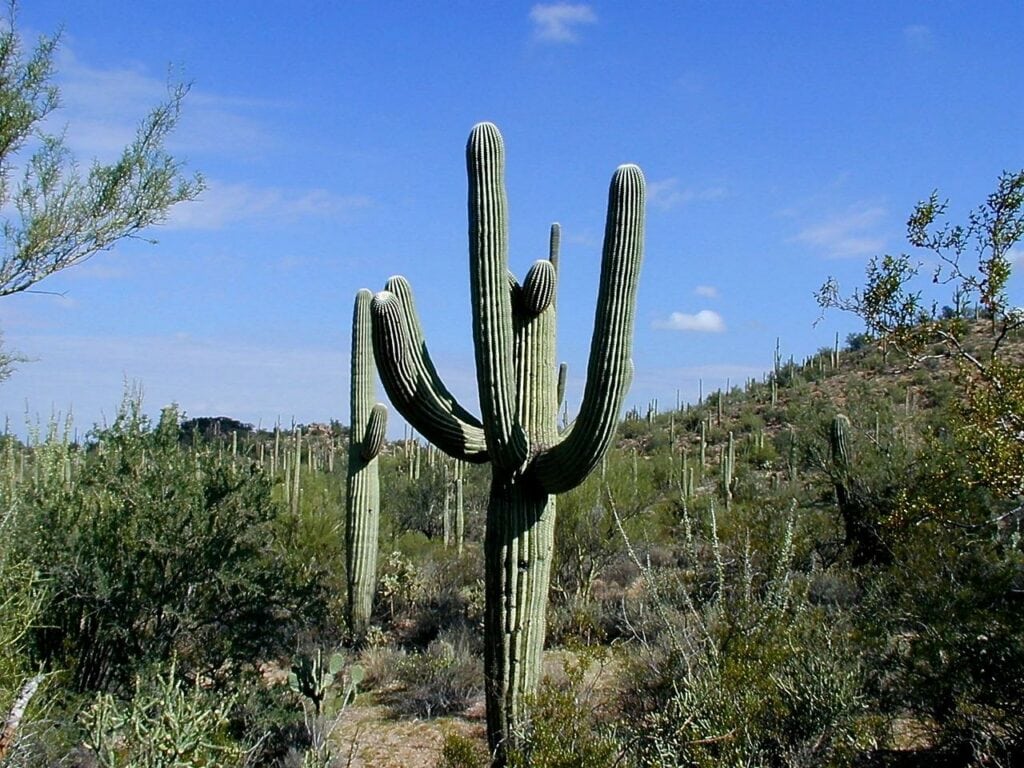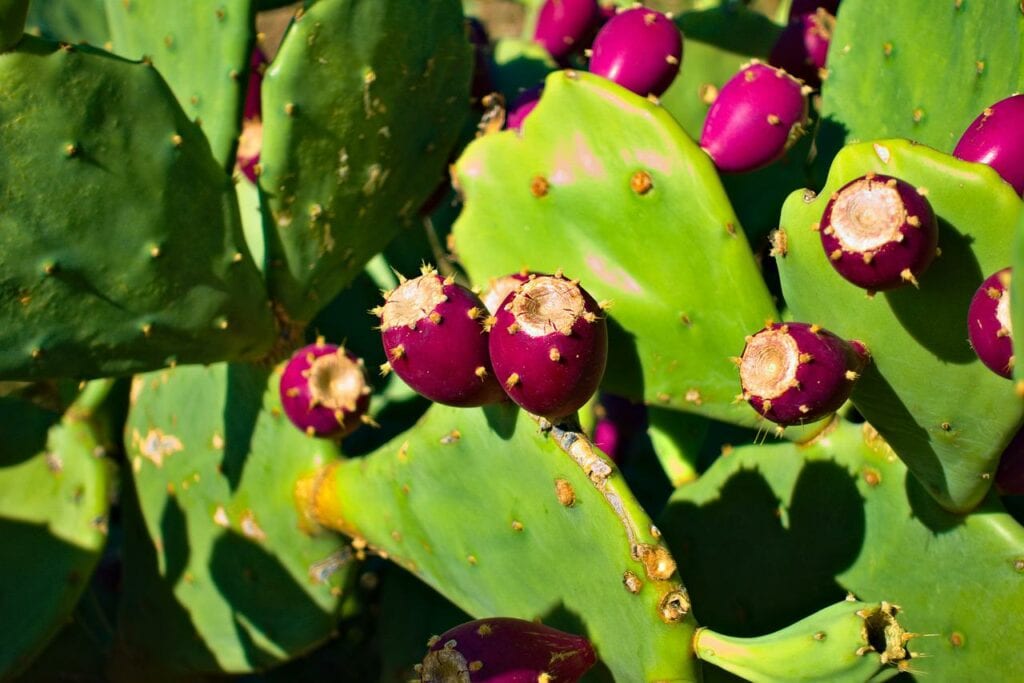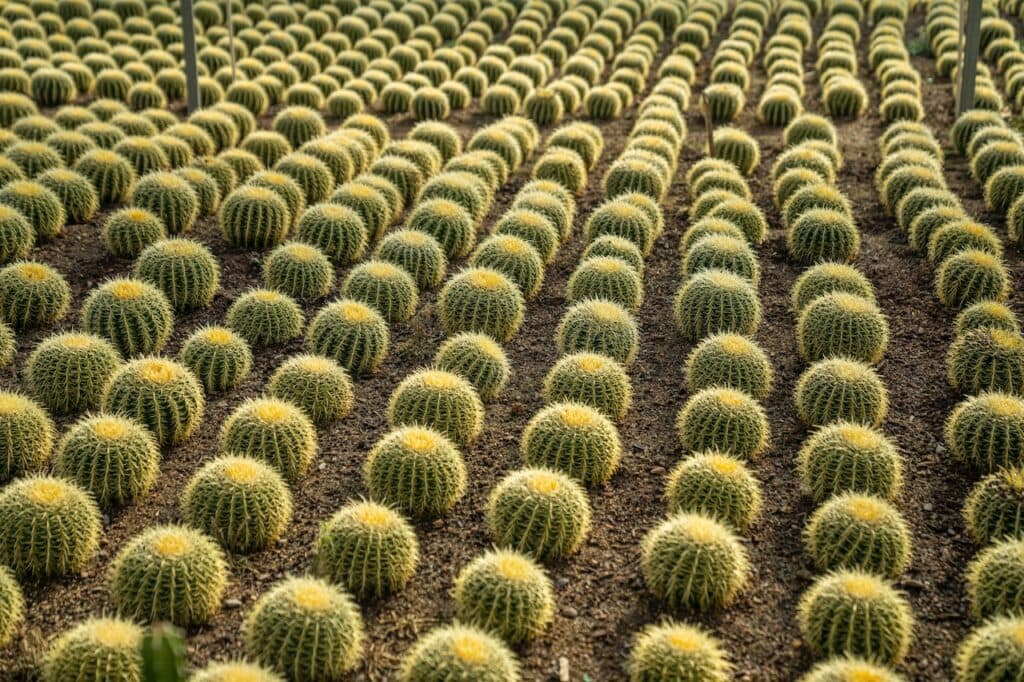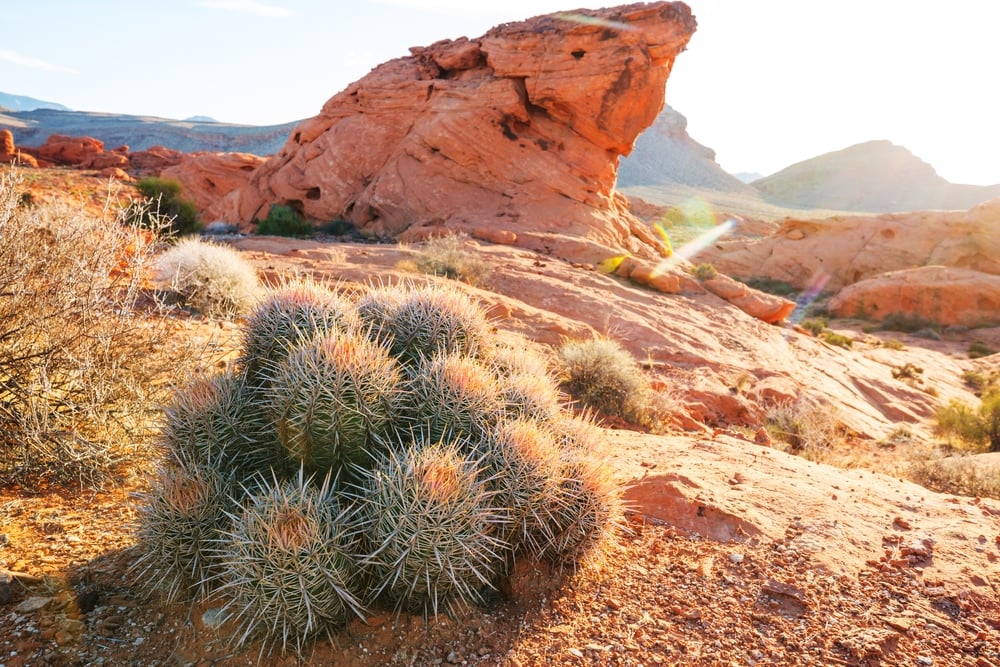7 Common Types of Cacti in Arizona (with Pictures)
-

- Last updated:

The state of Arizona is known to be dry and clear most months of the year. With an average daily temperature of 28 degrees Celsius, it is one of the warmest states in the United States. For this and other reasons, Arizona makes an attractive habitat for Cacti. The Saguaro National Park has become an international tourist attraction center, drawing over a million visitors. This park houses a vast collection of the popular Saguaro cactus species.
Here are some types of Cacti you can find in Arizona.
The 7 Common Types of Cacti in Arizona
1. The Saguaro Cactus

| Scientific name | Carnegiea Gigantea |
| Natives | The Sonoran desert and Southern Arizona |
| Life span | 150–200 years under the right conditions. |
| Size | 40 to 60 ft
3,200 to 4,800 pounds in very favorable weather conditions. |
| Notable facts: |
|
The Saguaro is the largest in the United States. A mature Saguaro can grow up to 40 ft tall, and it can be quite heavy. It is large and tree-like and often has arms sprouting from the side that lean upwards towards the sun. The plant has protective spines on its body. In late spring, the Saguaro is likely to grace us with a beautiful white flower bloom, and during the summer, it produces a bright red, fleshy fruit that is edible.
2. Violet Prickly Pear

| Scientific name | Opuntia Gosseliniana |
| Natives | Pima County, Arizona, Baja, California, and Sonora desert. |
| Lifespan | Over 20 years in the right weather conditions. |
| Size | 4 ft tall, 5 ft wide |
| Notable facts |
|
Another interesting type of cacti you will find in Arizona is the Violet Prickly Pear. These plants have a violet color that makes them a beauty to behold. They usually grow in clumps, about 4 by 5 ft. They are usually covered in spines, so do not be deceived by their beautiful appearance. Around the middle of the summer, they grace us with beautiful yellow flower blooms. Although there are over 40 species of this particular plant, there are just two common species; the prickly pear and the eastern prickly pear. Most of them grow white, yellow, or reddish-purple edible fruit.
3. Arizona Barrel

| Scientific name | Ferocactus wislizeni |
| Natives | The Sonoran Desert |
| Lifespan | An average lifespan of 50 years. |
| Size | 3 to 10 inches tall |
| Notable facts |
|
The Arizona Barrel cactus is known for the vicious spines that cover the body of the plants, which resemble hooks. It has thick, green skin covered with these spines. In the best conditions, it can grow up to 10 ft, but it is usually about 4 to 6 ft tall on average. You would likely find this plant in areas where flooding is common and where it can have access to enough water to store it up until the dry season. Mid-summer, the Arizona Barrel cactus produces the most beautiful blooms of reddish-orange flowers that draw cactus bees to them.
4. Teddy Bear Cholla

| Scientific name | Cylindropuntia Bigelovii |
| Natives | Arizona and Northwestern Mexico. |
| Lifespan | 30 years or more in proper conditions. |
| Size | About 1 to 5 ft tall |
| Notable facts |
|
If you see a cactus looking like a cute, furry teddy bear, then it most likely is the Teddy bear cholla. Unfortunately, it does not feel the way it looks. The soft-looking spines are sharp and can harm you. This plant is also called the jumping cholla because the spines sometimes fall off in a “jumping” manner. All the spines are closely knit together, minimizing the amount of water that can be lost from the stem of the plant. It grows as a shrub, and in May and June, the plant begins to bloom with beautiful greenish-yellow flowers.
5. Golden Hedgehog Cactus

| Scientific name | Echinocereus Nicholii |
| Natives | Pima County, Southern Arizona, and Northern Mexico. |
| Lifespan | 30 years in optimal conditions. |
| Size | 2 inches |
| Notable facts |
|
This plant has pale-yellow spines around its stem, which gives it a hedgehog resemblance. A group of about 20 stems of these plants, each about 2 inches tall, are arranged together. The stem has a pale-green color that can only be noticed in younger plants. As the plant matures, the spines become thicker and soon almost completely cover the entire plant. In the middle of spring, this plant begins to bear yellow or dark red flowers that are beautiful to watch.
6. Santa Cruz Beehive Cactus

| Scientific name | Coryphantha recurvata |
| Native | Santa Cruz County, southern Arizona. |
| Lifespan | About 15 years in the right weather conditions. |
| Size | About 3 ft |
| Facts |
|
The stems of these species of cacti can be cylindrical, flat, or spherical. They are mostly clustered together in a colony of about 50 plants. They are covered in hard spines of about less than an inch long. In the middle of summer, some yellow-colored beautiful flowers begin to bloom from the apex of the stem.
7. Buckhorn Cholla

| Scientific name | Cylindropuntia acanthocarpa |
| Native | The Mojave and Sonoran desert |
| Lifespan | 30 years or more. |
| Size | About 3 to 10 ft in full bloom. |
| Facts |
|
These plants make quite a statement since they usually grow in groups. When the weather is cooler, the stem of the Buckhorn cholla is greenish yellow. In hotter conditions, they become greenish-purple. It is a big plant, growing up to 10 ft in some regions. Due to the scattered branching of the stems, it can look a bit untidy, and the lower stems of older plants start to get woody. In April and May, they start to bloom, producing oval-shaped, dry fruits that are first green colored and then brown.
Bottom Line
Arizona is a suitable place to plant the cactus, and the residents are well aware of this. Therefore, you are very likely to run into a lot of cactus plants when you move through the state. With the information above, you should be able to identify some of the more common cactus plants when you see them.
Remember that the cactus plant is not friendly to the touch. Only a few species of the cactus are spineless or have less prominent spines, and these are the ones that most gardeners or homeowners tend to grow indoors. The rest of them have a very prickly spine, and some are more difficult to get out of the human skin than others.
Featured Image Credit: LHBLLC, Shutterstock
Contents

